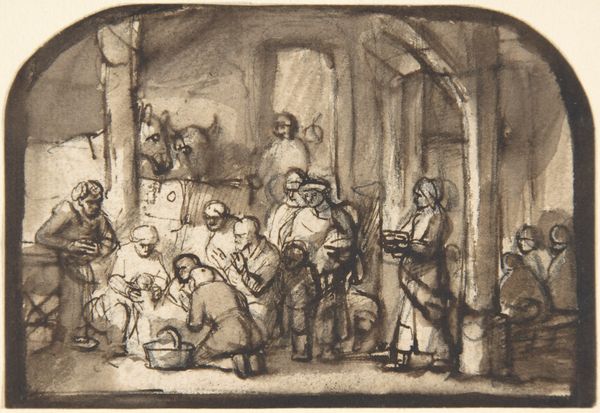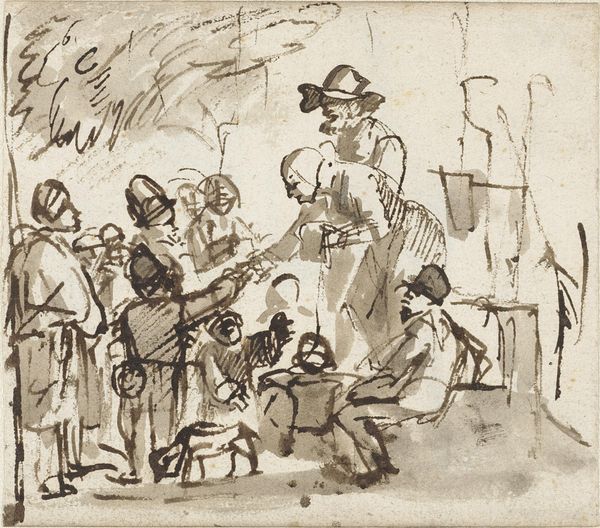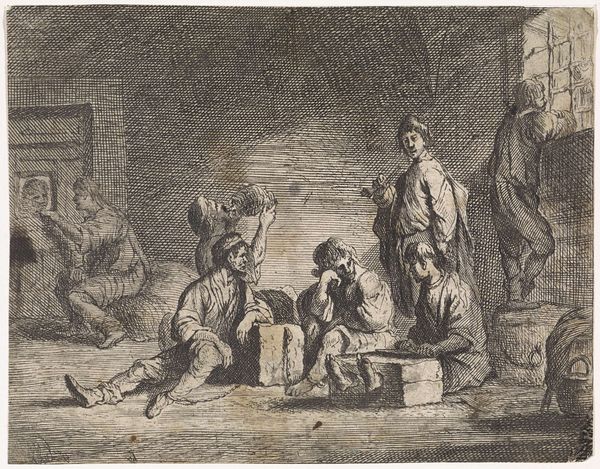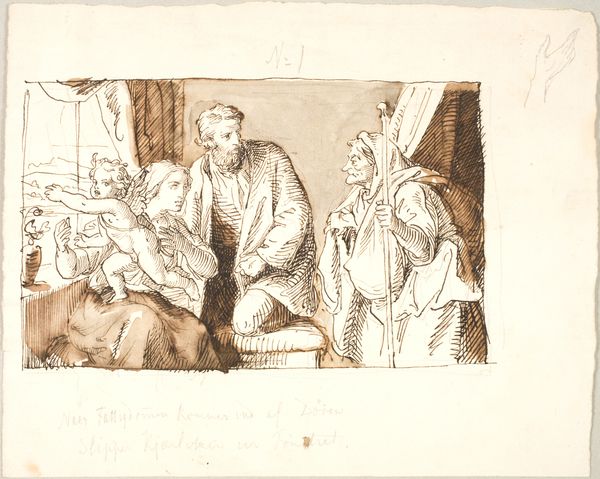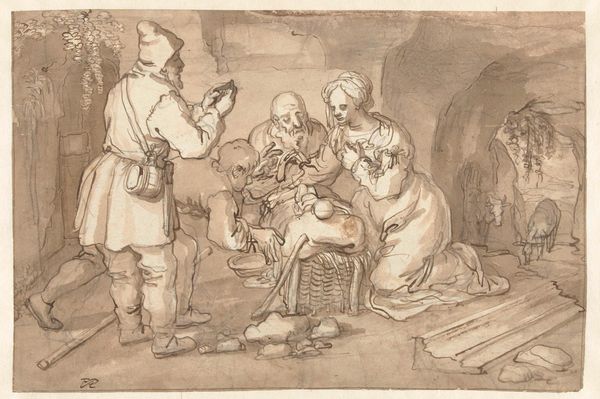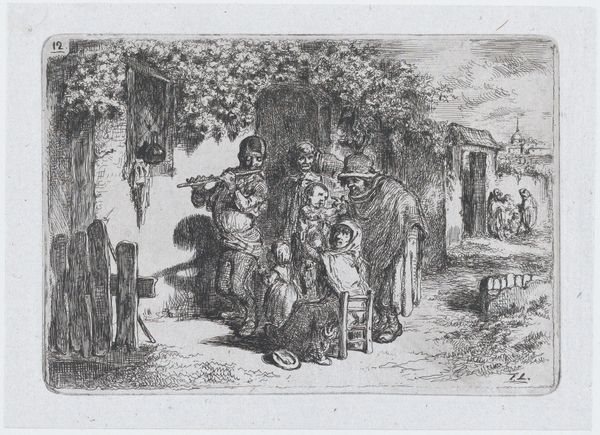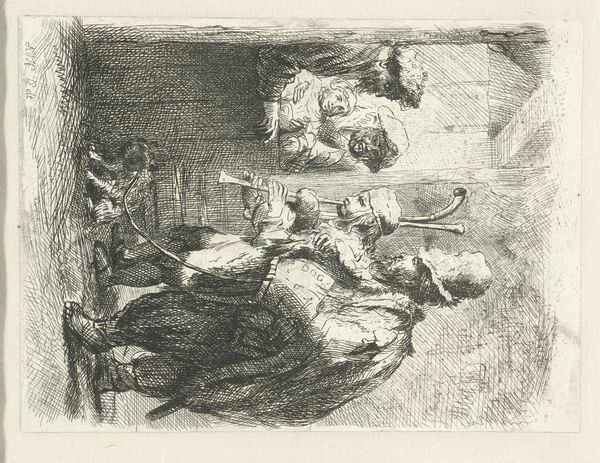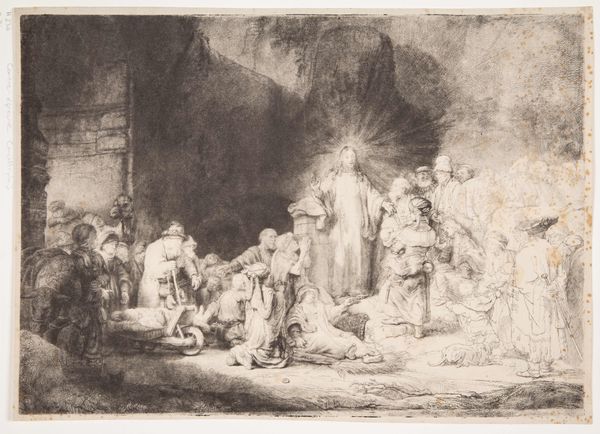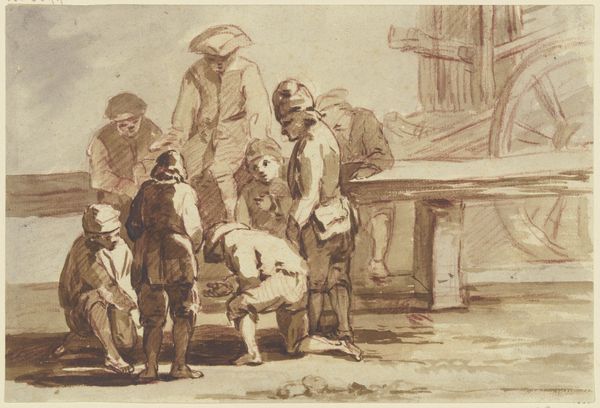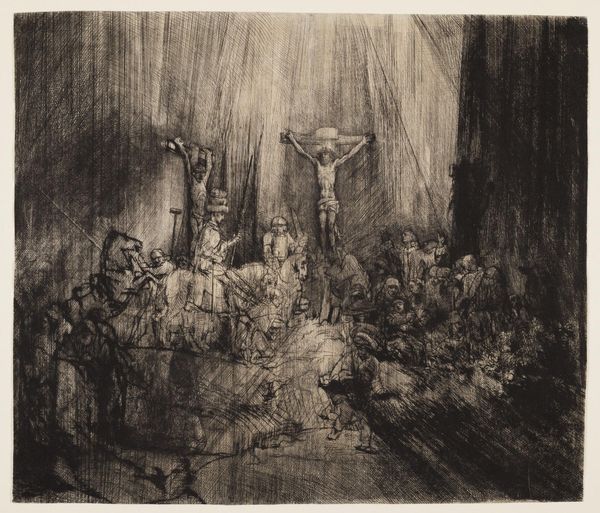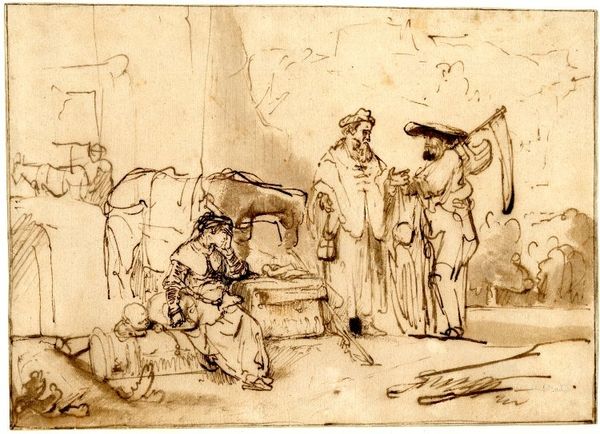
drawing, charcoal
#
portrait
#
drawing
#
dutch-golden-age
#
pencil sketch
#
charcoal drawing
#
figuration
#
form
#
sketch
#
line
#
genre-painting
#
charcoal
Copyright: Public domain
Curator: Looking at Rembrandt van Rijn’s “Studio Scene With Sitters,” likely created around 1650, I immediately sense a bustling yet intimate atmosphere. It feels like peering into a hidden world, doesn't it? Editor: It absolutely does. My first thought was how quickly this was made. You can see the urgency in those charcoal lines. I wonder about the availability, the quality, and perhaps even the cost of charcoal for artists in the Dutch Golden Age. It all impacted the type of art being created, didn’t it? Curator: Undoubtedly! The looseness gives it an incredibly modern feel. I find myself captivated by the figures, caught in their own world, some seeming to observe Rembrandt at work and others not at all. Editor: Yes, look at how the social dynamics might have dictated access to the artist's studio. Who got to be inside, who waited outside? Notice the textures Rembrandt conjures up here, too; they are raw and full of light and shadow created by nothing other than marks, as if built by labor! Curator: You are right to point that out; it is not as refined as others and therefore raw! Considering Rembrandt, I wonder, was he aware of this kind of immediacy or focusing more on something about the sitter(s) we might never know? Editor: Perhaps that looseness *was* the intent! Consider it this way: the Dutch Golden Age was fueled by trade. The very paper and charcoal pigment he’s using traveled through a complex system of labor, and global resource extraction. What kind of person sits for this kind of raw work, who would the work ultimately have been for, and where would it be traded? These are, after all, consumable items produced by the same forces as sugar or spice. Curator: Food for thought, indeed. It definitely changes my relationship to the work, thinking about how easily "art" could also be understood in this moment as yet another kind of...commodity! And at the same time, Rembrandt allows the figures a certain psychological depth, irrespective of his—or the market’s—motivations. A depth I think shines through even in a simple sketch. Editor: And there we find Rembrandt complicating the market forces again, which maybe helps to give it an iconic or "eternal" quality that continues to capture attention.
Comments
No comments
Be the first to comment and join the conversation on the ultimate creative platform.
